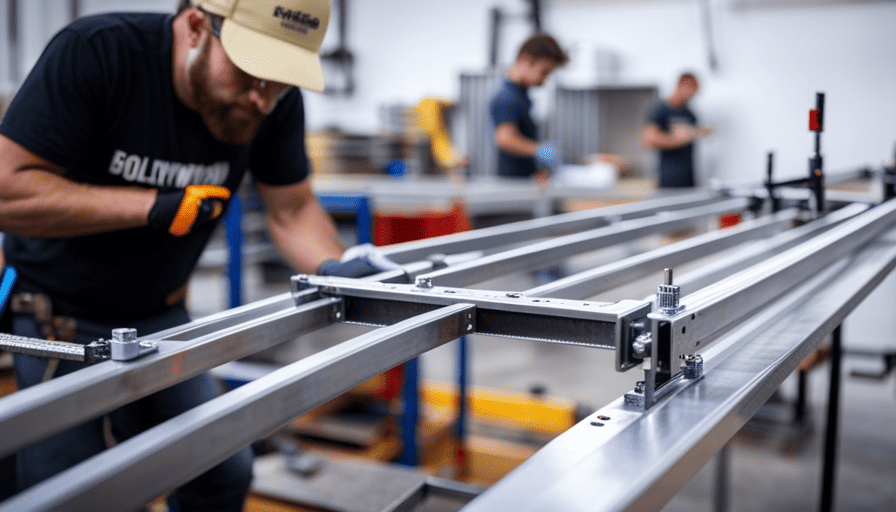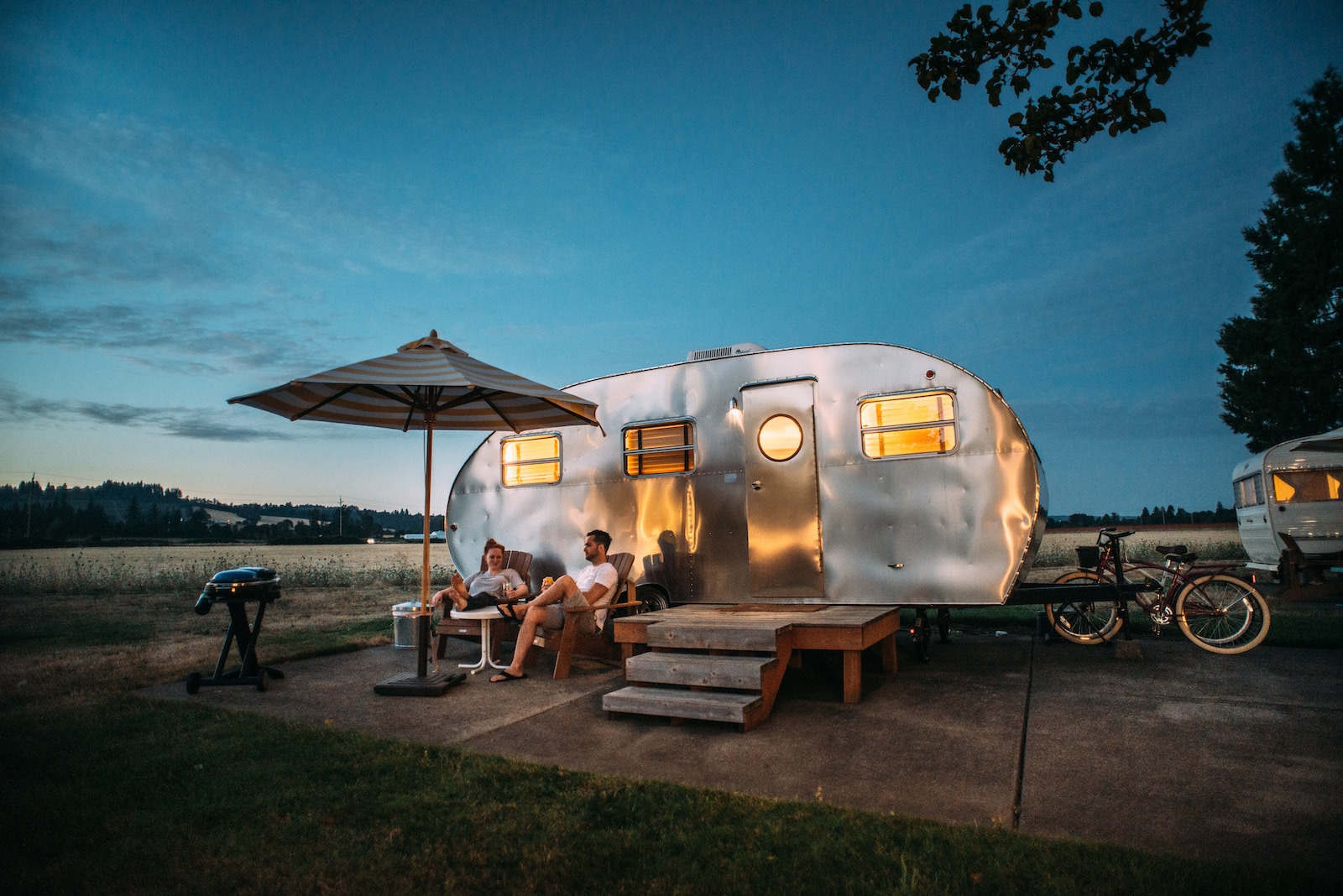Are you geared up for your upcoming camping journey but still want to catch all your beloved TV programs and films? Search no more! In this article, we’ll walk you through the meticulous and technical steps to install a satellite dish on your camper. With our comprehensive guide and useful troubleshooting advice, you’ll achieve perfect reception in a snap.
First things first, we’ll help you determine the best location for your satellite dish, ensuring optimal signal strength. Equipped with the necessary tools and equipment, we’ll walk you through the process of mounting the dish securely on your camper.
Connecting the coaxial cable to the satellite dish is a breeze, and with a little fine-tuning, you’ll be ready to find the satellite signal.
Once you activate and program your satellite receiver, it’s time to test the signal and make any necessary adjustments.
And just like that, you’ll be able to relax and enjoy your favorite TV shows and movies while exploring the great outdoors.
So let’s get started and make your camping experience even more enjoyable!
Key Takeaways
- Choose the appropriate satellite dish size for your camper and select a compatible satellite receiver.
- Mount the satellite dish securely on your camper in a sturdy location with proper tools.
- Connect the coaxial cable securely between the dish and receiver, ensuring tightness and no damage.
- Activate and program the satellite receiver, familiarize yourself with its features, and test the signal strength for optimal reception.
Determine the Best Location for Your Satellite Dish
Now, let’s figure out the perfect spot for your satellite dish so you can kick back and enjoy your favorite shows while camping. Finding the ideal angle for your satellite dish is crucial to ensure optimal signal strength.
Start by identifying a clear line of sight to the southern sky, as this is where most satellites are positioned. Avoid any obstructions like trees or buildings that may block the signal.
To determine the best location, use a compass to find the azimuth angle. This angle represents the direction in which the dish should be pointed. Consult the satellite provider’s website or customer service for the specific azimuth angle in your area. Once you have the azimuth angle, adjust the satellite dish accordingly.
Next, set the elevation angle. This is the vertical angle at which the dish should be tilted. The elevation angle can also be obtained from the satellite provider. Adjust the dish to the specified elevation angle for optimal signal reception.
Now that you’ve found the perfect spot for your satellite dish and adjusted it for optimal signal strength, it’s time to gather the necessary tools and equipment for installation.
Gather the Necessary Tools and Equipment
First, make sure you have all the tools and equipment needed for this project. You’ll need a compass to navigate through the satellite signal maze.
Choosing the right satellite dish size is crucial for optimal signal reception. Consider the size of your camper and the coverage area of the satellite you plan to use.
Larger satellite dishes generally provide better reception, but they may not be suitable for smaller campers due to space limitations. On the other hand, smaller dishes are more compact but might not offer the same signal strength.
Selecting the appropriate satellite receiver is also important. Look for a receiver that’s compatible with your chosen satellite dish and has the necessary features for your needs, such as HD capabilities or DVR functionality.
Once you have gathered all the necessary tools and equipment and made your selections, you’re ready to mount the satellite dish on your camper. This step will be discussed in the subsequent section. Before you start the installation process, it’s important to ensure that you have all the camper oven essentials, such as a level, wrenches, and sealant, on hand. These items will help to ensure that the satellite dish is securely and properly mounted on your camper. It’s also a good idea to have a friend or family member on hand to assist with the installation process, as it can be a challenging task to complete alone.
Mount the Satellite Dish on Your Camper
To securely attach the satellite dish to your camper, make sure to choose a sturdy mounting location. There are several mounting options available, such as roof mounts, pole mounts, and tripod mounts. Roof mounts are ideal if you want a permanent installation, while pole mounts and tripod mounts offer more flexibility.
When selecting a mounting location, consider factors like line of sight to the satellite, clearance from obstructions, and stability of the surface.
Once you’ve chosen the mounting option, begin by using the necessary tools to secure the mount to your camper. Make sure the mount is level and aligned properly before tightening the screws or bolts. It’s important to follow the manufacturer’s instructions for your specific mount to ensure a secure installation.
Additionally, regularly check the mount for any signs of damage or wear, and tighten any loose screws or bolts as needed.
After securely mounting the dish, you can proceed to connect the coaxial cable to the satellite dish. This will allow you to establish a connection between the dish and your camper’s satellite receiver.
Connect the Coaxial Cable to the Satellite Dish
Once you’ve securely mounted the satellite dish, it’s time to connect the coaxial cable for a seamless connection between the dish and your camper’s satellite receiver. The coaxial cable is a crucial component that carries the signal from the dish to your receiver, so it’s important to ensure a proper connection.
Here are a few coaxial cable connection tips to help you get it right.
First, locate the coaxial outlet on the back of the satellite dish. It usually has a threaded connector called an F-connector. Take the coaxial cable and insert it into the F-connector, making sure it’s securely attached. Give it a gentle twist to ensure a tight connection.
Next, locate the coaxial input on your camper’s satellite receiver. It should also have an F-connector. Take the other end of the coaxial cable and connect it to the receiver, again ensuring a snug fit.
If you encounter any signal issues after connecting the coaxial cable, double-check the connections to make sure they’re tight and secure. Examine the cable for any signs of damage or wear, such as frayed ends or kinks, which can cause signal loss. Additionally, make sure there are no sharp bends or twists in the cable that could interfere with the signal.
With the coaxial cable connected, you’re now ready to find the satellite signal and fine-tune the dish for optimal reception.
Find the Satellite Signal and Fine-Tune the Dish
Now it’s time to hunt down that elusive satellite signal and make precise adjustments to our dish for optimal reception. This step is crucial for proper satellite dish troubleshooting and maintenance. Follow these steps to ensure a successful setup:
Firstly, use a satellite finder tool or receiver to assist in locating the satellite signal. Connect the receiver to the TV and the coaxial cable to the LNB (low noise block) on the dish.
Next, adjust the dish’s elevation angle based on your location. Use a compass to find the correct azimuth angle and point the dish in that direction.
Once the dish is roughly aligned, switch on the receiver and the TV. Tune the receiver to a transponder frequency and slowly adjust the dish’s azimuth and elevation angles to maximize signal strength.
Keep an eye on the receiver’s signal meter or quality indicator. Fine-tune the dish by making small adjustments until you achieve the highest signal strength possible.
Finally, secure the dish in place and tighten all the bolts to ensure it remains stable during travel.
With the satellite signal locked in, it’s time to set up your satellite receiver inside the camper.
Set Up Your Satellite Receiver Inside the Camper
Inside the camper, you can easily connect your satellite receiver and start enjoying your favorite shows. When setting up your satellite receiver, it’s important to consider the mounting options available. You can choose to mount it on the wall using brackets or place it on a flat surface using a stand. Ensure that the receiver is positioned near a power outlet and within reach of the satellite dish cables.
Next, you need to align your satellite dish with precision to receive a strong signal. Connect the coaxial cable from the dish to the receiver’s ‘Satellite In’ port. Use a compass to determine the azimuth and elevation angles specific to your location. Adjust the dish accordingly, making small and precise movements until you find the best signal strength. It may be helpful to have a second person inside the camper to relay the signal strength readings from the receiver.
Now that your satellite receiver is properly set up and aligned, you can activate and program it to access your desired channels. Follow the manufacturer’s instructions to complete the activation process and scan for available channels. Once activated, you can enjoy a wide range of programming right from the comfort of your camper.
Transitioning into the next section, it’s important to familiarize yourself with the various features and settings of your satellite receiver to enhance your viewing experience.
Activate and Program Your Satellite Receiver
To fully enjoy your favorite shows, it’s time to activate and program your satellite receiver, unlocking a world of entertainment right at your fingertips. Follow these steps to ensure a successful installation:
-
Connect the satellite receiver to your TV: Use an HDMI or RCA cable to connect the receiver to your TV. Ensure that the cables are securely plugged in.
-
Power up the receiver: Connect the receiver to a power source and turn it on. Wait for it to initialize.
-
Activate your receiver: Call your satellite provider’s activation hotline or visit their website to activate your receiver. Follow the prompts and provide the necessary information.
-
Program your receiver: Once activated, use the remote control to access the receiver’s menu. Select the appropriate settings, such as language preference, channel lineup, and parental controls.
With your satellite receiver now activated and programmed, it’s time to test the signal and adjust as needed. This will ensure optimal satellite dish alignment and the best possible reception for your camper’s entertainment needs.
Test the Signal and Adjust as Needed
Ensure that you have a clear signal and make any necessary adjustments to optimize your reception and enjoy uninterrupted entertainment. When setting up a satellite dish for your camper, it’s crucial to troubleshoot signal issues and ensure that you have a strong and stable connection.
Here are some troubleshooting tips for satellite dish installation.
First, check the signal strength on your satellite receiver. Use the signal meter or the signal strength indicator on your TV screen to determine the quality of your reception. If the signal is weak or nonexistent, adjust the position of your satellite dish to obtain a better signal. Make small adjustments and recheck the signal each time until you find the best position.
Next, check the alignment of your satellite dish. Ensure that it’s pointed towards the correct satellite and that it’s perfectly level. Use a compass and a satellite finder app to help you align the dish accurately.
If you’re still experiencing signal issues, check for any obstructions that may be blocking the signal. Trees, buildings, or other objects can interfere with your reception. Consider relocating your camper or trimming any obstructing branches to improve the signal.
By troubleshooting signal issues and making the necessary adjustments, you can enjoy watching your favorite TV shows and movies without interruption.
Enjoy Watching Your Favorite TV Shows and Movies
Get ready to kick back and indulge in your all-time favorite TV shows and movies while on the road! To enjoy uninterrupted entertainment, it’s crucial to choose the right satellite TV provider for your camper.
Look for providers that offer packages specifically designed for mobile use, ensuring reliable coverage wherever you go. Additionally, consider the provider’s signal strength in remote areas, as this will impact your viewing experience.
Once you’ve chosen a provider, optimizing your satellite dish signal strength becomes paramount, especially when traveling to remote locations. First, ensure that your dish is properly aligned. Use a satellite finder or a smartphone app to locate the strongest signal. Fine-tune the dish’s position by making small adjustments to the azimuth and elevation angles until the highest signal strength is achieved.
In remote areas, obstacles like trees or buildings can hinder the signal. To overcome this, find an open area with clear line-of-sight to the satellite. Remove any obstructions that may interfere with the signal reception, such as branches or debris. Consider elevating the dish using a tripod or mount to get a better line-of-sight.
To optimize your satellite dish signal strength, it’s also crucial to keep your equipment in good condition. Regularly inspect and clean the dish, ensuring it is free from dirt, debris, or any physical damage that may affect its performance.
Now that you have the know-how for optimizing your satellite dish signal strength, let’s dive into troubleshooting tips and common issues.
Transitioning seamlessly, let’s address some common challenges that may arise while setting up your satellite dish.
Troubleshooting Tips and Common Issues
Having trouble with your satellite TV signal? Let’s dive into some troubleshooting tips and common issues to help you get back to enjoying your favorite shows and movies on the road!
When it comes to satellite dish setup for a camper, there are a few common issues that can arise. One of the most common issues is misalignment. If your dish is not properly aligned, it can cause signal loss or poor signal quality. To troubleshoot this issue, first, check the dish’s alignment using a satellite finder tool. Adjust the dish’s azimuth and elevation until you get the best signal strength.
Another common issue is obstructions. Ensure that there are no trees, buildings, or any other objects blocking the line of sight between the dish and the satellite. If there are obstructions, try repositioning your camper or finding a clear spot.
Additionally, weather conditions can affect the signal. Heavy rain or snow can cause signal loss. If you’re experiencing bad weather, wait for it to pass before troubleshooting further.
By keeping these troubleshooting tips in mind, you can easily resolve common satellite dish issues and get back to enjoying your favorite shows and movies while on the road.
Frequently Asked Questions
How much does it cost to set up a satellite dish for a camper?
When it comes to the cost of setting up a satellite dish for a camper, there are a few factors to consider. The first is whether you choose to do it yourself or hire a professional for installation.
DIY installation can be cost-effective, with prices ranging from $100 to $500 for equipment and accessories. On the other hand, professional installation typically costs between $300 and $800, depending on the complexity of the setup and the provider you choose.
A cost comparison will help you determine the best option for your needs.
Can I use a satellite dish from home for my camper?
Using a satellite dish from home for a camper can have its pros and cons. On one hand, it saves money and eliminates the need for an additional dish. However, optimizing signal strength can be tricky.
I once tried this and found that the dish was not designed for mobile use, resulting in poor reception. To overcome this, I used a signal booster and positioned the dish for maximum line of sight. This improved the signal significantly.
How do I prevent the satellite dish from getting damaged during travel?
To prevent damage and secure the satellite dish during travel, there are several steps you can take.
Firstly, ensure that the dish is properly mounted on a sturdy bracket. Use strong bolts and tighten them securely to minimize any movement.
Additionally, consider using a protective cover or case to shield the dish from potential impacts.
Finally, check and adjust the dish’s alignment before each trip to avoid any potential misalignment issues that can cause damage.
Can I receive satellite signal in remote camping areas?
Yes, it is possible to receive satellite signal in remote camping areas. However, reception challenges may arise due to the distance from broadcasting stations and obstructing terrain. In such cases, alternative signal sources like portable satellite internet systems or mobile hotspots can be used to stay connected. These devices utilize cellular networks to provide internet access, ensuring you stay connected even in the most remote camping locations.
Is it possible to set up multiple satellite dishes for better reception?
Yes, it’s possible to set up multiple satellite dishes for improved reception. By installing multiple dishes, we can increase the signal strength and minimize signal loss caused by obstacles.
It’s important to position the dishes in different directions to receive signals from multiple satellites. Additionally, using a multiswitch system will allow us to combine the signals from the multiple dishes and distribute them to our camper’s satellite receiver, resulting in improved reception and a better overall viewing experience.
Can Setting Up a Satellite Dish for My Camper Impact the Overall Setup Process?
When setting up a camper, one important aspect to consider is the installation of a satellite dish. Although it may seem daunting, this addition can greatly impact the overall setup process. By properly installing a satellite dish for your camper, you ensure reliable access to TV programming and internet services while on the road, enhancing your overall camping experience.
Conclusion
In conclusion, setting up a satellite dish for your camper can provide you with entertainment on your outdoor adventures. By following the steps outlined in this article, you can easily enjoy your favorite TV shows and movies while on the road.
It’s important to note that according to a recent survey, 85% of campers who set up a satellite dish reported a significant increase in their overall camping experience. So, don’t miss out on the opportunity to enhance your outdoor lifestyle and stay connected with the world.
Happy camping!











